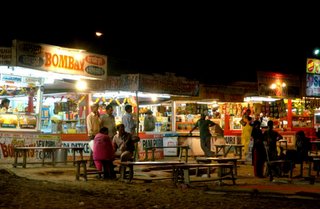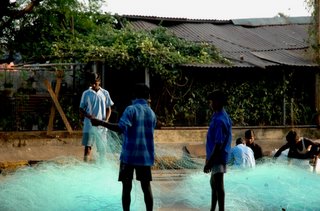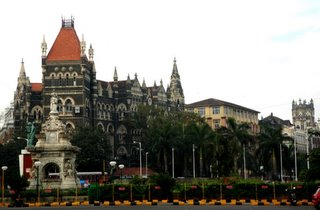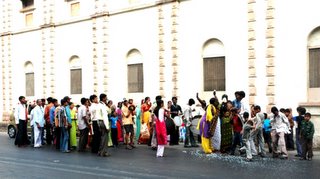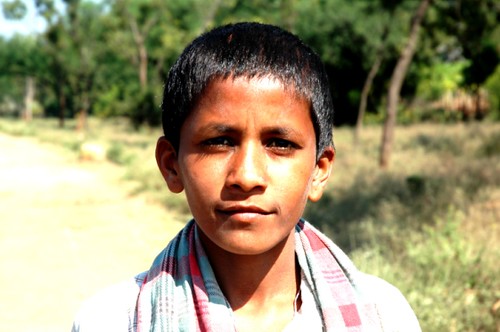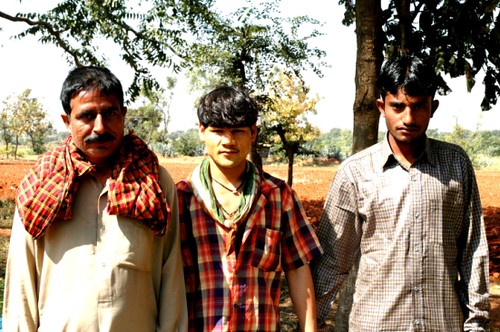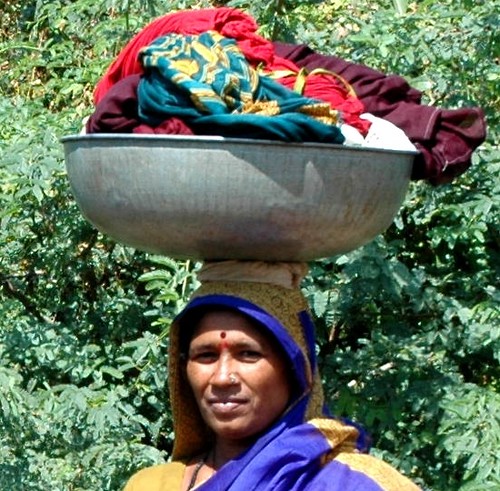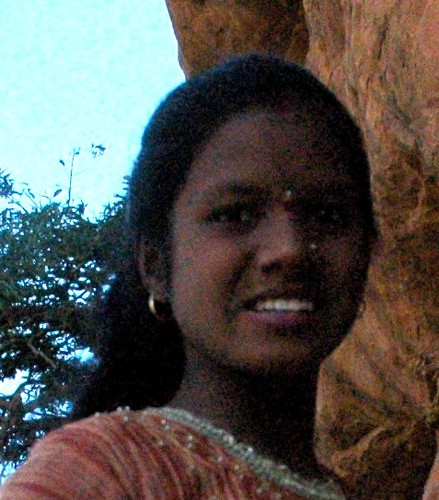Wednesday, November 30
Monday, November 28
Elephanta
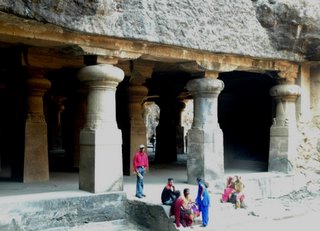
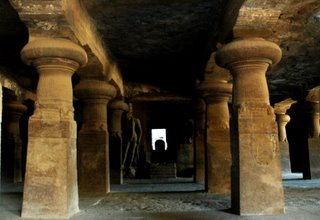





The mysterious carvings at the Elephanta rock-cut caves, on an island off Bombay about an hour’s ferry-ride away, are thought to be a synthesis of Chalukyan and Gupta art forms dating, it is thought, to the 4th century. We do not know who created them, how they were conceived or executed, why or when they were abandoned. The square pillars with rounded lotus capitals are distinctly Chalukyan, yet the sensuous grace of the carvings are closer to the Gupta renaissance after a thousand years of Buddhist-dominated subject matters.
The towering Sadashiva – Eternal Shiva -- carving in Cave 1 at Elephanta has not been surpassed in Indian art. It is a colossal yet serene representation of the five-faced Shiva, whose three frontal aspects are visible as Mahadeva – the lord of the gods; Bhairava – the destructive aspect of divinity; and Vamadeva – the creative i.e. female aspect of Shiva. The fourth face is hidden from the viewer, and suggested to be a Nandi-borne Pashupati or lord of beasts. The fifth face of Shiva is transcendent, beyond human comprehension, and is never carved in the Hindu tradition.
To your left as you face the Sadashiva is a carving of Ardhanarishwara – a half-male and half-female synthesis of divinity. The other gods pay homage to Shiva in this symbolization of the wholeness of creation – note Brahma borne by a flock of geese, next to Indra mounted on his elephant.
The carving on the other side depicts Ganga descending to the earth through Shiva’s locks. According to the Puranas, the king Sagar held an Ashwamedha Yajna, during the course of which the sacrificial horse wandered to the underworld. Its pursuers, attempting to capture it, disturbed the meditations of the sage Kapila who not only reduced them to ashes in the customary manner, but also cursed their remains. The only recourse for their spirits to be liberated would be for the Ganga to flow down from the heavens and wash away their sins. Sagar’s descendant Bhagirath did severe penances to engineer this, and Shiva agreed to assuage the torrent’s destructive force by filtering it through his hair.
In the carving, Ganga is three-headed, representing the Bhagirathi, Mandakini and Bhogvati tributaries above Shiva. Parvati is turned away a little, resenting Ganga as a rival for her lord’s attention, even as Shiva stretches a hand to reassure her.
The final major carving shows Shiva dancing the awesome Tandava to destroy the universe at the end of a kalpic cycle so that creation can begin anew. His left hand, the only one intact, raises the veil of illusion, so that the reality underneath Maya – Anandam or Bliss -- stands revealed.
Rudolph Otto (1869-1937)was a neo-Kantian philosopher, one of the most influential thinkers about religion of the last century, who is best known for his analysis of the experience that underlies all religions. He calls this experience numinous and says it has three components: Mysterium -- the wholly other, so entirely different from anything we experience in ordinary life that it evokes a reaction of silence; also Tremendum, that provokes terror because it presents itself as overwhelming power; and finally, the numinous presents itself as Fascinans, as merciful and gracious. Mysterium Tremendum Et Fascinans. Here's an extract from one of Otto's essays:
Eventually one's eyes find their way to the massive, main niche. Here towers an image of the deity that I can only compare with certain works of Japanese sculpture and the great images of Christ in old Byzantine churches: a three-headed form, depicted from the chest up, growing out of the rock, three times the size of a human being. To get the full effect, one must sit down. The middle head looks straight ahead, silent and powerful; the other two heads are shown in profile. The stillness and the majesty of the image is complete. It portrays Siva as the creator, the preserver, and the destroyer of the world, and at the same time as the savior and bestower of blessings. Nowhere have I seen the mystery of the transcendent expressed with more grandeur or fullness than in these three heads. When the little Indian guide who accompanied us saw how much the image affected us, he began to speak. He said (and it's quite believable) that the image changes its appearance according to the amount of daylight that filters into the great hall. Sometimes it's calm and massive, at others frightfully majestic, at still others it's smiling and benevolent. It has stood there like this for perhaps a thousand years, abandoned by its faithful. When one turns around, one looks through the entrance of the cave, across the antechamber, and out onto the gray-blue sea and at the opposing, wooded peaks. Thus, the face of the creator surveys his handiwork. To see this place would truly be worth a trip to India in itself, and from the spirit of the religion that lived here one can learn more in an hour of viewing than from all the books ever written.
[From Rudolf Otto, Autobiographical and Social Essays, ed. Gregory D. Alles (Berlin: Mouton de Gruyter, 1996). ]
Sunday, November 27
Saturday, November 26
Pune



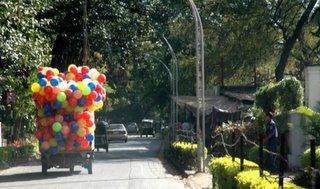
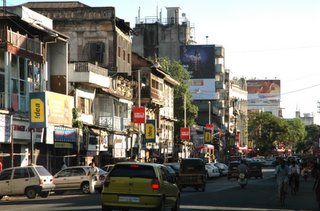
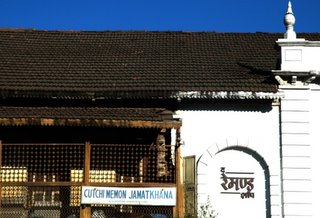

We ask to be taken to the BKS Iyengar Yoga Institute in Pune. It is off the beaten track, and not an easy place to find, housed in a nondescript compound in the residential neighborhood of Model Colony. The auto-driver hears 'yoga', and, mapping it to his customary fares, deposits us by-and-by at the foot of the Rajnish 'Osho' Ashram, where a streetful of Israeli, Japanese and French sannyasins are kicking up a fine old caterwaul -- dancing, spinning arms upraised like dervishes, screaming, yelping and otherwise loudly proclaiming their one-ness with the cosmos. It turns out some elderly Ashram personage has shuffled off her mortal coil, and they are giving her cortege a befitting sendoff. After they pass, peace descends to Koregaon Park, leafy again under banyan trees.
The Deccan Queen leaves Pune for Bombay VT -- Chhatrapati Shivaji Terminus -- in the early morning. We cut through tunnels and switchbacks for breathtaking Deccan vistas as we descend to the sea level.

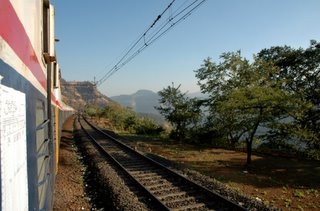

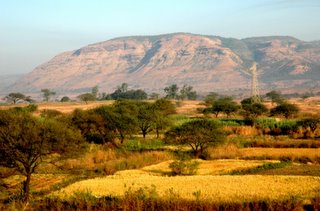
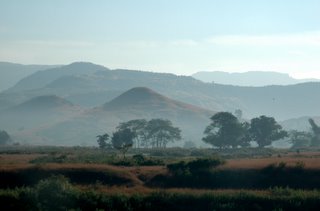
Tuesday, November 22
Gooty, Guntakal, Raichur








The dust in the air makes for riotous sunsets, best viewed from the Kurla Express as it meanders through the land -- the last one I remember of this vividness was in Tucson.
The fortress rock at Gooty is about 2200 ft. above the sea level. The Gooty fortress was a stronghold of the Marathas, but was taken from them by Hyder Ali; in 1789 Tipu Sultan ceded it to the Nizam of Hyderabad. In 1800 the Nizam ceded the district of Anantapur with certain other areas to the East India Company in lieu for protective British forces.









